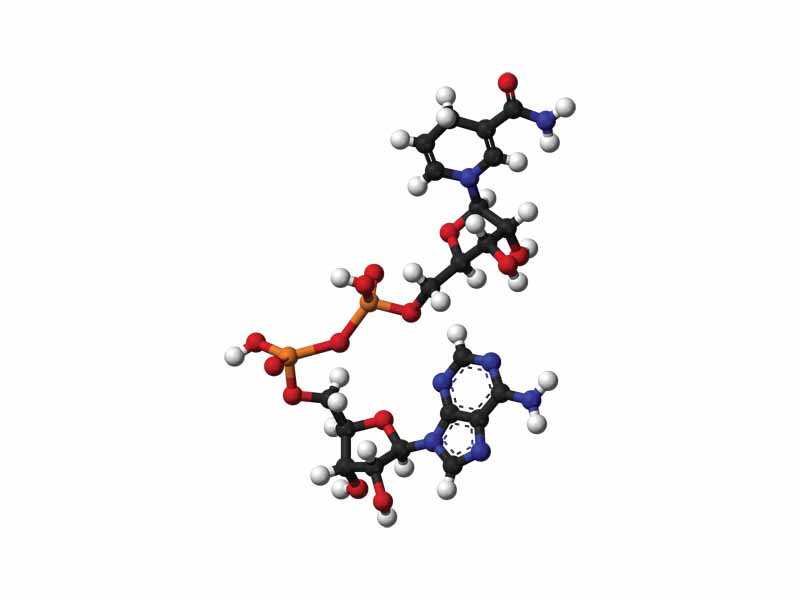Interdisciplinary Note (13 of 16)
If you formulated a solution 1M for both NADH and NAD+, and you ran a wire from an electrode submerged in your solution to a standard hydrogen electrode - a solution which is 1M for H+ ions and 1 bar (100 kPa) for H2 gas - taking care to include a salt bridge between the two solutions, electrons would begin to flow from NAD+/NADH electrode to the hydrogen electrode. NADH would spontaneously start reducing hydrogen ions and producing hydrogen gas. If you measured the voltage between the two, calling the hydrogen electrode ground, the voltage of the NADH/NAD+ electrode would be -0.32V.
In electrostatics, we learn that a positive potential is a place where a positive charge would have high potential energy if you moved it there. Positive charges fall in potential energy from positive to negative potential. Think about how you would need to push a positive charge towards the positive plate of a parallel plate capacitor. You have to work to get the positive charge closer to the plate. If you let it go, it will fall back through the space towards the negative plate, like falling from the ceiling to the floor. Now, think about how the situation would be reversed for a negative charge. Near the negative plate would be where a negative charge would have high potential energy. You would have to do work to push a negative charge towards the negative plate. A negative potential is where electrons, having negative charge, have positive potential energy. Electrons fall from a negative potential like from the ceiling to the floor.
The electrons are "falling" from NADH to the hydrogen ions through the wire. Conversely, it would take work to push the electrons uphill from the hydrogen electrode back to the NAD+/NADH electrode. This is what we mean when we say that NAD+ has a negative standard reduction potential, E0. It's an uphill climb to reduce NAD+ with H2.
In electrochemistry, we conceive of all the places in all the substances in the world a valence electron might find itself, and we imagine moving an electron from a standard hydrogen electrode to that place. For some, the journey is uphill. Those are the substances with a negative standard reduction potential. After you reduce something with a negative standard reduction potential, the product will be a good reducing agent. It will want to give the electrons back. Electrons fall away from such a substance spontaneously onto other things.
If we had another electrode, set up like our NADH/NAD+ electrode, but this time with water and oxygen gas, and we hooked it to our standard hydrogen electrode, this time electrons would start spontaneously flowing towards the oxygen electrode, reducing O2 to make H2O. When we measure the voltage of our oxygen electrode, it will read +0.82V. Oxygen isn't something electrons fall away from. It's something electrons fall towards. O2 has a positive standard reduction potential. It's an oxidizing agent.
We can imagine letting electrons fall from NADH to the hydrogen electrode then from the hydrogen electrode to O2. The whole trip would represent a drop in energy for the electrons through a voltage gradient of +1.14V (-(-0.32V) + 0.82V). This is what we're doing when we compute the standard cell potential of an electrochemical cell, when we take the standard reduction potential of the reducing agent (-0.32V) and subtract it from the standard reduction potential of the oXidizing agent (+0.82V). The subtraction for the reducing agent is just changing the direction the electrons are moving (-(-0.32V)). The standard reduction potential tells you the joules per coulomb (volts) to move electrons onto the substance from hydrogen. But in our electrochemical cell, they are moving away from NADH. The computation is just an imaginary path. From NADH to hydrogen and then from hydrogen to oxygen. If we measure everything against hydrogen, we can put all the results in a table and imagine the path for any redox couple.
Of course, a path from NADH to oxygen is what electrons follow through the electron transport chain. +1.14 V represents the overall energy gradient for the journey, or it would if all the reagents happened to be standard concentrations, which, of course, they would not be, but that's the idea.
